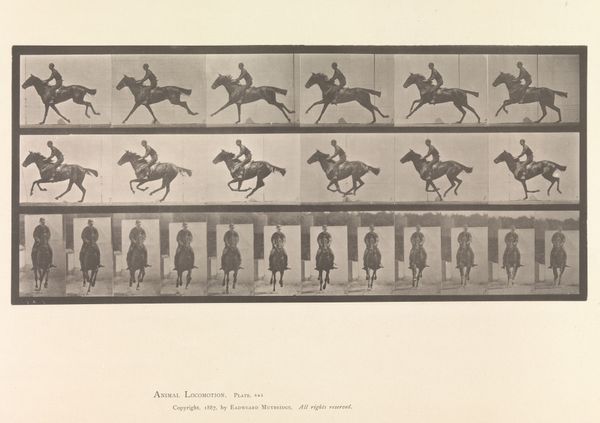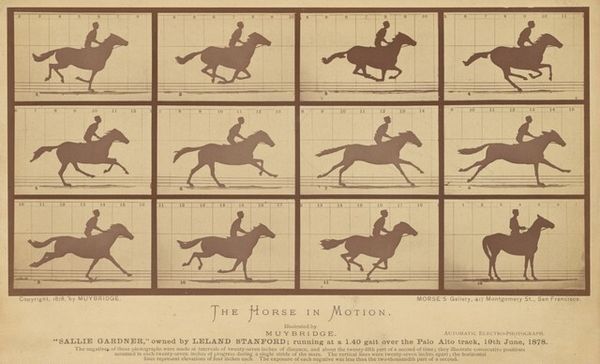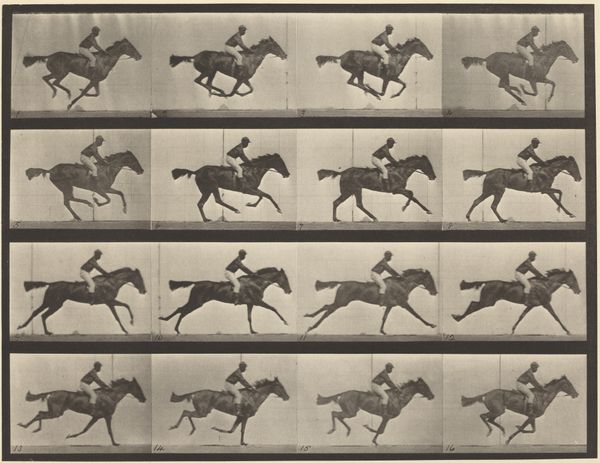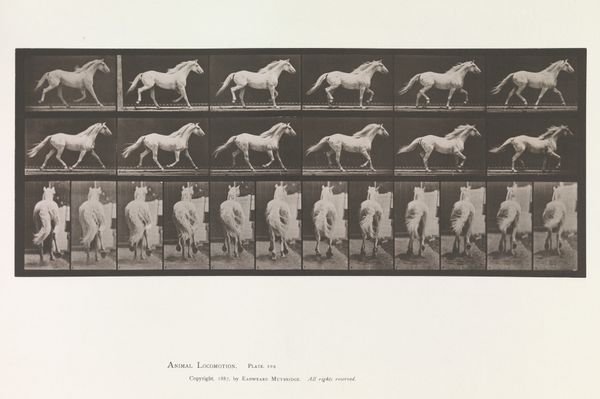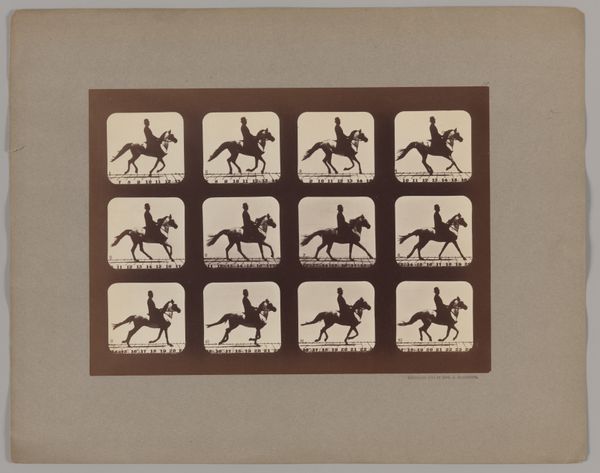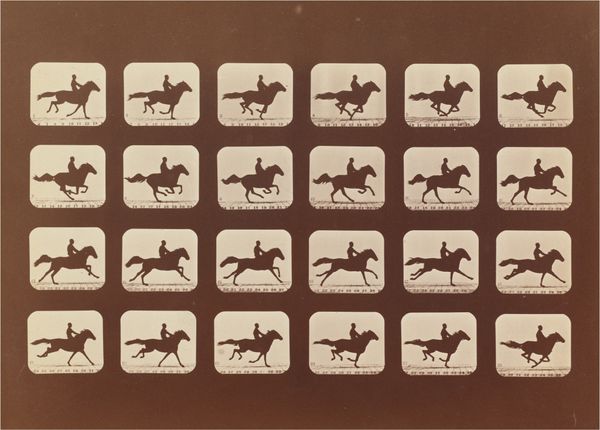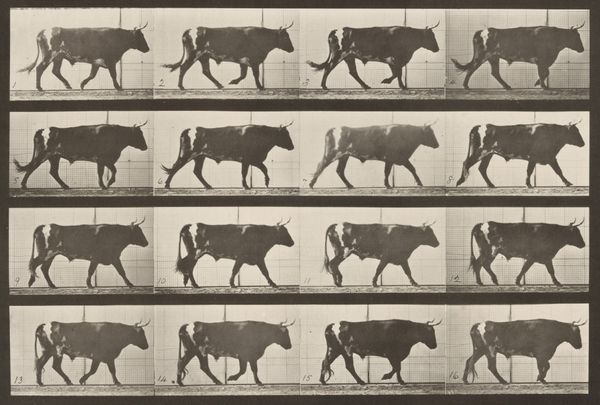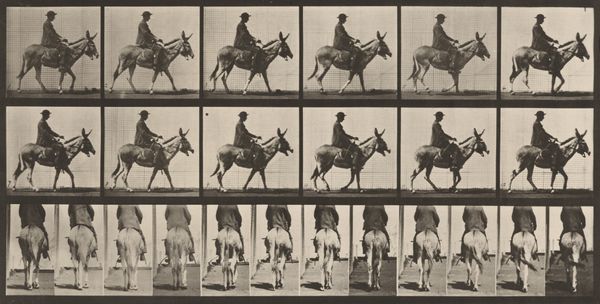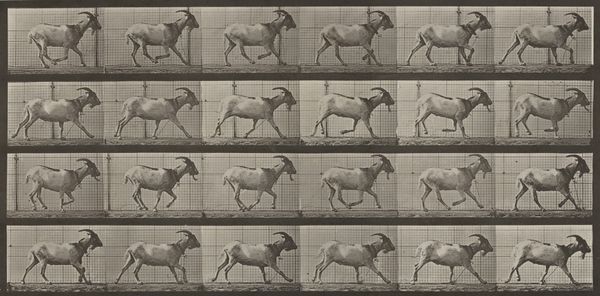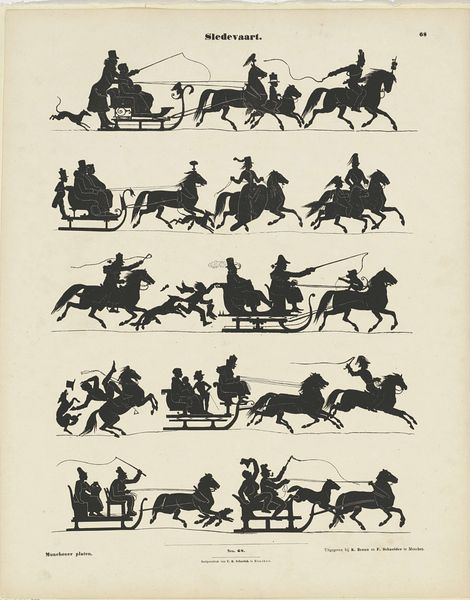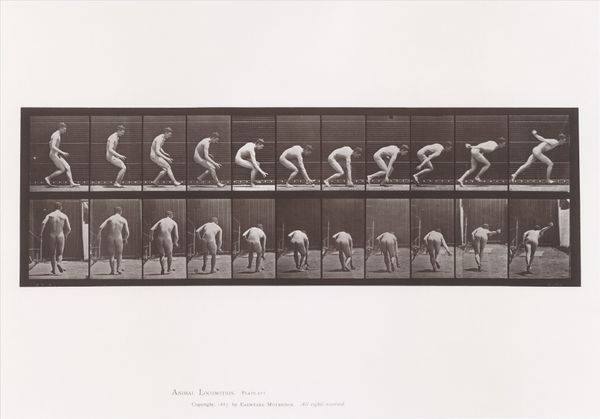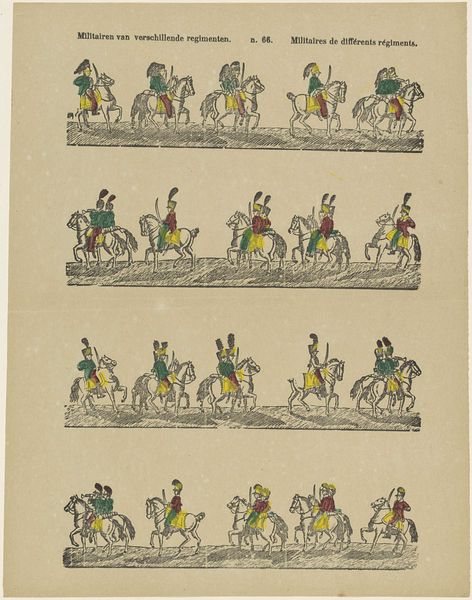
print, photography, gelatin-silver-print
# print
#
impressionism
#
landscape
#
figuration
#
photography
#
gelatin-silver-print
#
realism
Dimensions: height 480 mm, width 613 mm, height 198 mm, width 370 mm
Copyright: Rijks Museum: Open Domain
Curator: Let’s turn our attention to “'Bouquet', Galloping,” a gelatin-silver print by Eadweard Muybridge from 1887. What springs to mind when you first look at this series of images? Editor: It's like a burst of movement frozen in time! There’s a beautiful, almost balletic quality to the horse's gallop, and something undeniably melancholic to the grainy texture of each frame. Like little ghosts captured mid-stride. Curator: A fitting observation. Muybridge was, of course, interested in deconstructing movement itself. This piece is a prime example of his scientific approach, breaking down the horse’s gallop into sequential phases. The composition focuses intently on revealing the mechanics of locomotion through visual analysis, rather than romanticism. Editor: I get that, the intent's there, but I can’t shake the feeling that there’s something deeply poetic in his rigorous documentation. Imagine the horse doesn’t know it is helping settle a debate; it’s just… being. There’s an accidental dance in this "science." Curator: Interesting. From a formalist perspective, the tight cropping and stark contrast emphasize the horse's form. The rigid grid structure amplifies the concept, highlighting the differences in limb positioning, while grounding the horse in an analytical framework. Editor: It also hints at the future of cinema, doesn’t it? I mean, you can almost imagine this as a single looping GIF now. These individual shots show us the world a fraction of a second apart, reminding me about life in general—the smallest details reveal how ephemeral time is. Curator: Precisely. His experiments certainly influenced generations of artists and filmmakers, offering unprecedented insight into capturing reality through moving images, yet there’s this tension between the subjective and the objective representation of the physical realm. Editor: Yes. It's this dichotomy that makes the artwork truly sing. The horse is more than a mere "subject," because its spirit permeates those frames, turning mechanical breakdown into, well, beauty in motion. Curator: A perfect counterpoint to the pure structural composition. Editor: Precisely. That tension. Delicious, isn’t it?
Comments
rijksmuseum about 2 years ago
⋮
Eadweard Muybridge is a major forerunner of modern photography. He demonstrated early on that a camera ‘sees’ more, and better, than the human eye. He began making studies of motion in 1872 to settle the question whether all four legs of a horse are off the ground at the same time when galloping. And, indeed, horses ‘float’. Many a painting turns out to be based on a misunderstanding.
Join the conversation
Join millions of artists and users on Artera today and experience the ultimate creative platform.
